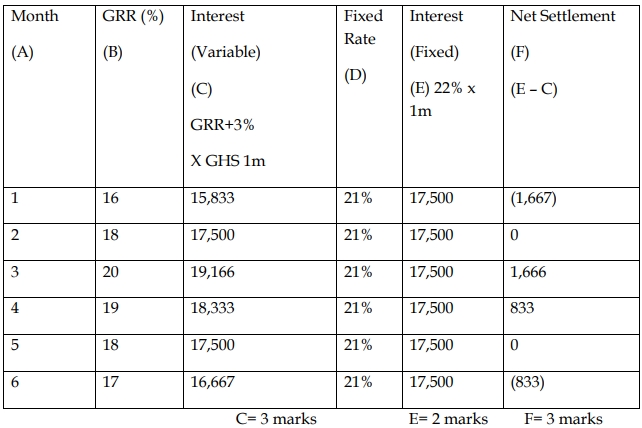- 4 Marks
Question
Explain FOUR (4) differences between a foreign currency swap and an interest rate swap.
Answer
A foreign currency swap and an interest rate swap are both financial derivatives used to manage risk, but they differ in the following ways:
- Nature of the Exchange:
- Foreign Currency Swap: Involves exchanging principal and interest payments in one currency for equivalent principal and interest payments in another currency.
- Interest Rate Swap: Involves exchanging interest payments on an agreed notional amount in the same currency. Typically, one party pays a fixed interest rate, while the other pays a floating interest rate.
- Purpose:
- Foreign Currency Swap: Used to hedge or manage exposure to exchange rate fluctuations when dealing with multiple currencies.
- Interest Rate Swap: Used to manage or hedge against interest rate risk, particularly the risk of changes in interest rates over time.
- Underlying Asset:
- Foreign Currency Swap: The underlying asset is a currency.
- Interest Rate Swap: The underlying asset is an interest rate, often tied to a benchmark like LIBOR.
- Usage:
- Foreign Currency Swap: Commonly used by multinational companies with operations in different countries to manage currency exposure.
- Interest Rate Swap: Commonly used by companies or financial institutions to stabilize interest payments and manage cash flow volatility.
- Topic: Foreign exchange risk and currency risk management
- Series: MAY 2020
- Uploader: Theophilus

